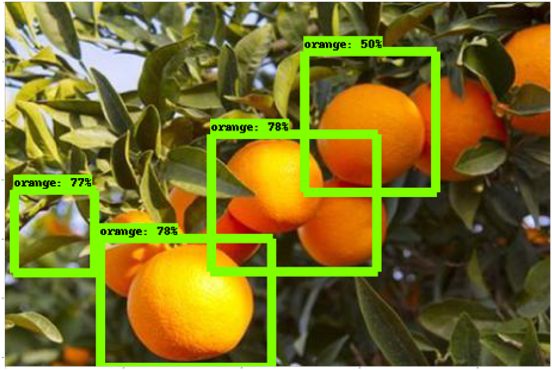Citrus orchards are one of the most relevant crops in Mediterranean regions, specially in Spain with a cultivated area of 295.000 ha. Currently, Spain is the first producer and exporter of fresh oranges in Europe, despite the strong competition coming from third countries. Harvesting is one of the most expensive operation due to the low level of mechanization of these kind of tasks in Spain. Selecting the optimal harvest time depends on the maturity state index and fruit colour and size, among others. However, the most important challenge for this kind of crops is the estimation of the number and state of fruits at the earliest possible stage in order to improve management and to predict price and market position. Thus, accurate and early estimation of citrus yields is important for both producers and agricultural cooperatives to be competitive and make informed decisions when selling their products. Yield estimation is key for predicting stock volumes, avoiding stock ruptures and planning harvesting operations. Visual yield estimations have traditionally been employed, resulting in inaccurate and misleading information.
Dronfruit project has been developed in the framework of the Rural Development Programme of Andalucía Region 2014-2020, funded by the Agricultural European Innovation Partnership (EIP-AGRI). EIP-AGRI was launched in 2021 to foster competitive and sustainable farming and forestry that achieves more and better from less. The main goal of Dronfruit project was to develop an automated image processing methodology to detect, count and estimate the size of citrus fruits on individual trees using deep learning techniques.

Figure 1. a) Computer vision; processing information and b) identified oranges in a typical tree in Sevilla region.
During 3 consecutive annual campaigns, a total of 20 trees from a commercial citrus grove were monitored using images captured from an unmanned aerial vehicle (UAV). These trees were harvested manually, and fruit sizes were measured. A Faster R-CNN Deep Learning model was trained using a custom dataset to detect oranges in the obtained images. An average standard error (SE) of 6.59 % was obtained between visual counting and the model’s fruit detection. Using the detected fruits, fruit size estimation was also performed.

Figure 2. The labelling process for the test images (left) and different types of fruits labelled (right).
The results obtained indicate that this size estimation method can be employed for size discrimination prior to harvest. A model based on Long Short-term Memory (LSTM) was trained for yield estimation per tree and for a total yield estimation. The actual and estimated yields per tree were compared, resulting in an approximate error of SE = 4.53 % and a standard deviation of SD = 0.97 Kg. The actual total yield, the estimated total yield and the total yield estimated by an expert technician were compared. The error in the estimation by the technician was SE = 13.74 %, while the errors in the model were SE = 7.22 % and SD =4083.58 Kg.
These promising results demonstrate the potential of the present technique to provide yield estimates for citrus fruits or even other types of fruit.
References

